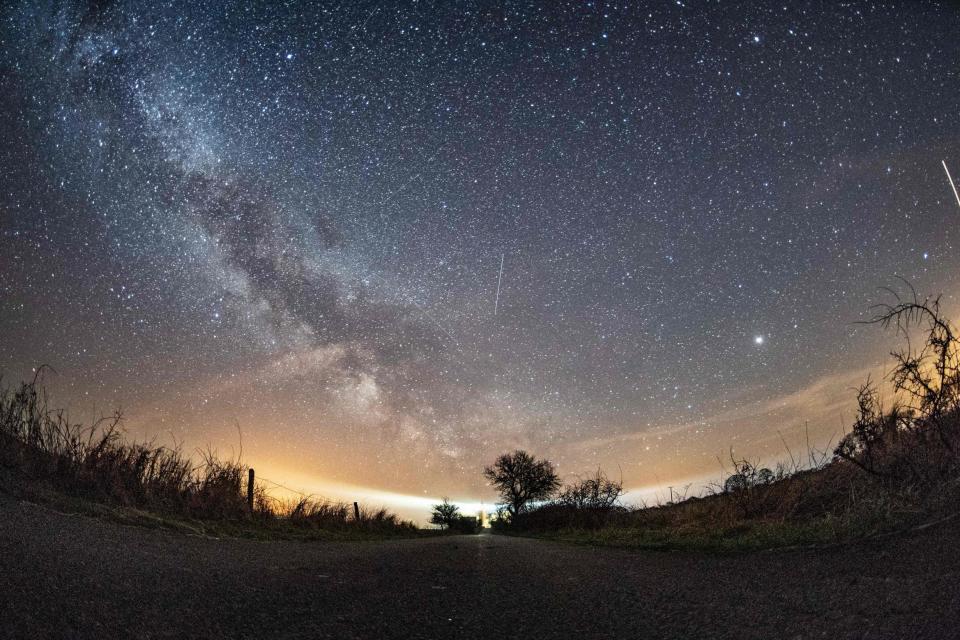Lyrid meteor shower: Stargazers set for sunrise or sunset view of spectacular phenomenon

Stargazers will treated to dozens of meteors lighting up skies in the UK as the Lyrid meteor shower on Thursday morning.
Between tens and hundreds of meteors are set to leap across the sky.
For those lucky enough to live in areas unspoilt by light pollution, it is set to provide a viewing feast.
The shower is due to peak at 1pm on April 22, but astronomers believe the best time to view it will be early morning or after sunset.
Meteor showers - also known as shooting stars - are caused when pieces of debris, known as meteorites, enter Earth's atmosphere.
The metro showers are named after the constellation of Lyra the Harp.
Tania de Sales Marques, an astronomer at the Royal Observatory Greenwich, said: "Since the peak occurs during the day the best time to try to spot the shower will be before sunrise on the 22nd or after sunset.
"It is expected that this meteor shower will produce around 18 meteors per hour."
It happens when our planet collides with the trail of the Comet C/1861 G1 Thatcher.
Named after the Lyrid constellation, the shower is of medium brightness, but not as luminous as the spectacular Perseid meteor shower in August.
According to NASA, Chinese astronomers recorded the shower as far back as 687 BC.
The comet Thatcher had its last closest approach to the solar system in 1861 and is expected to return in 2276.
The Lyrid meteor shower happens every year between April 16 25.
Read More
Former Clean Bandit star calls for action over toxic air in London
‘Pervasive racism’ led to failure to commemorate black/Asian troops
William calls for UK to ‘harness spirit of invention’ to save Earth
5 ways to update your home this spring – with help from TikTok

 Yahoo Finance
Yahoo Finance 